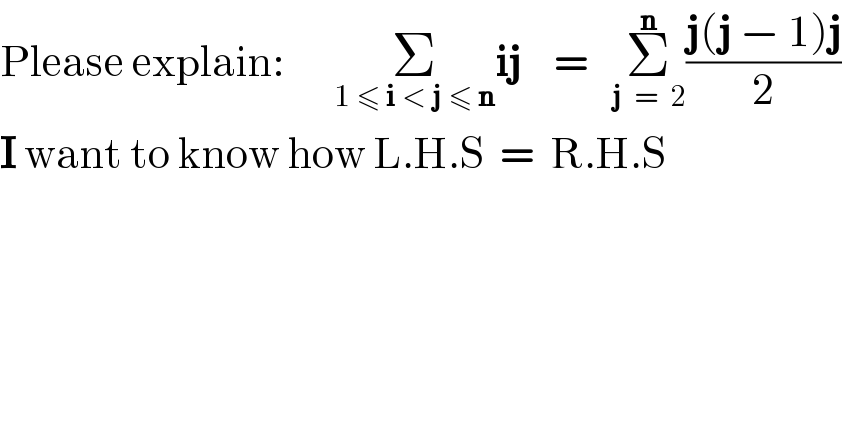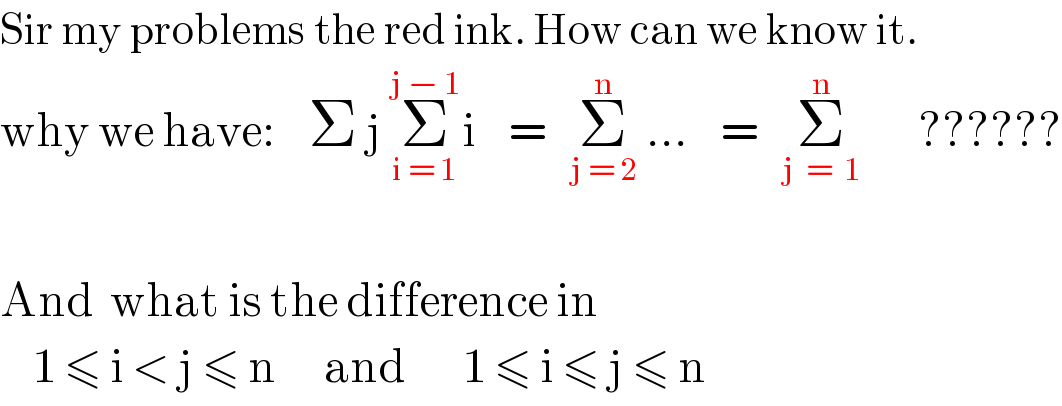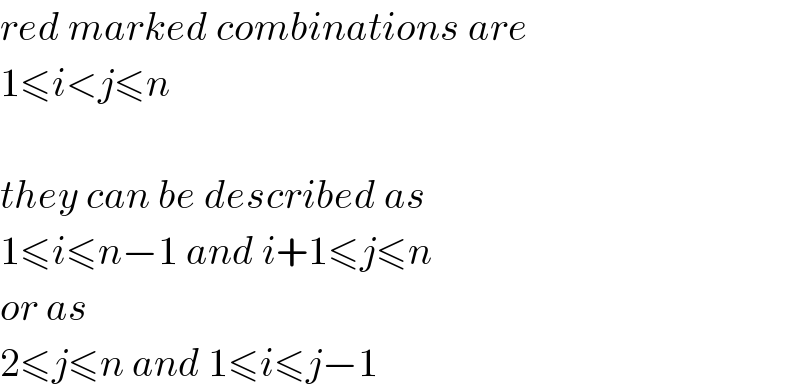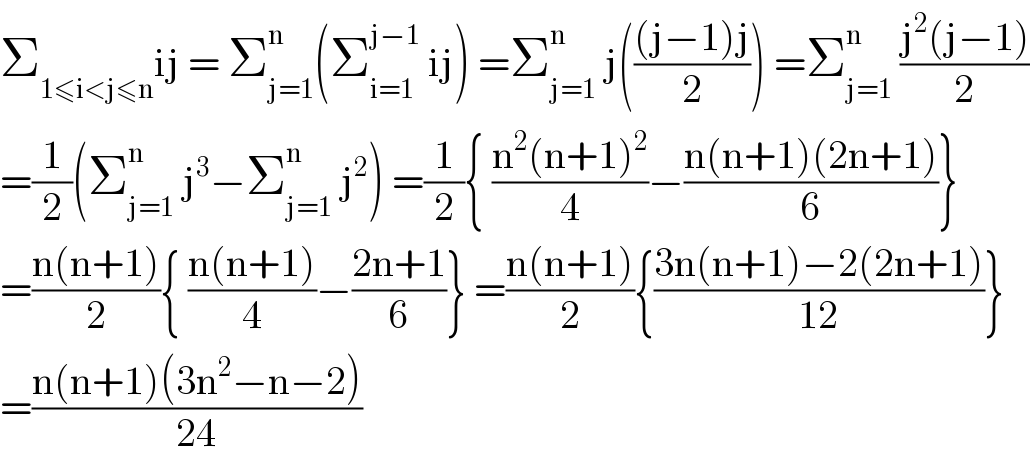
Question and Answers Forum
Question Number 98844 by I want to learn more last updated on 16/Jun/20

Answered by mr W last updated on 16/Jun/20
![Σ_(1≤i<j≤n) ij =Σ_(i=1) ^(n−1) (iΣ_(j=i+1) ^n j) =Σ_(i=1) ^(n−1) [i×(((n+i+1)(n−i))/2)] or =Σ_(i=2) ^n (jΣ_(i=1) ^(j−1) i) =Σ_(i=2) ^n (j×((j×(j−1))/2)) =Σ_(j=2) ^n ((j^2 (j−1))/2)](Q98853.png)
Commented byI want to learn more last updated on 16/Jun/20

Commented byI want to learn more last updated on 16/Jun/20

Commented byI want to learn more last updated on 16/Jun/20

Commented bymr W last updated on 16/Jun/20

Commented byI want to learn more last updated on 16/Jun/20

Commented bymr W last updated on 16/Jun/20

Commented bymr W last updated on 16/Jun/20

Commented byI want to learn more last updated on 16/Jun/20

Answered by mathmax by abdo last updated on 16/Jun/20

Commented byI want to learn more last updated on 17/Jun/20

Commented bymathmax by abdo last updated on 17/Jun/20

Answered by mathmax by abdo last updated on 16/Jun/20

Commented byI want to learn more last updated on 17/Jun/20

